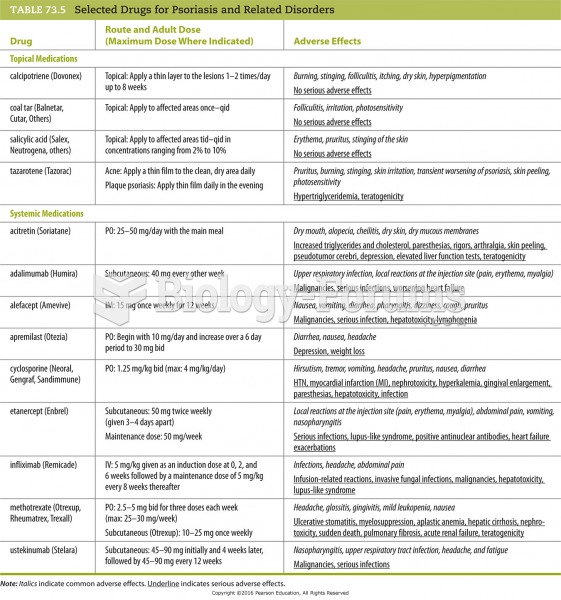|
|
|
By definition, when a medication is administered intravenously, its bioavailability is 100%.
Complications of influenza include: bacterial pneumonia, ear and sinus infections, dehydration, and worsening of chronic conditions such as asthma, congestive heart failure, or diabetes.
Increased intake of vitamin D has been shown to reduce fractures up to 25% in older people.
Human stomach acid is strong enough to dissolve small pieces of metal such as razor blades or staples.
Pink eye is a term that refers to conjunctivitis, which is inflammation of the thin, clear membrane (conjunctiva) over the white part of the eye (sclera). It may be triggered by a virus, bacteria, or foreign body in the eye. Antibiotic eye drops alleviate bacterial conjunctivitis, and antihistamine allergy pills or eye drops help control allergic conjunctivitis symptoms.






